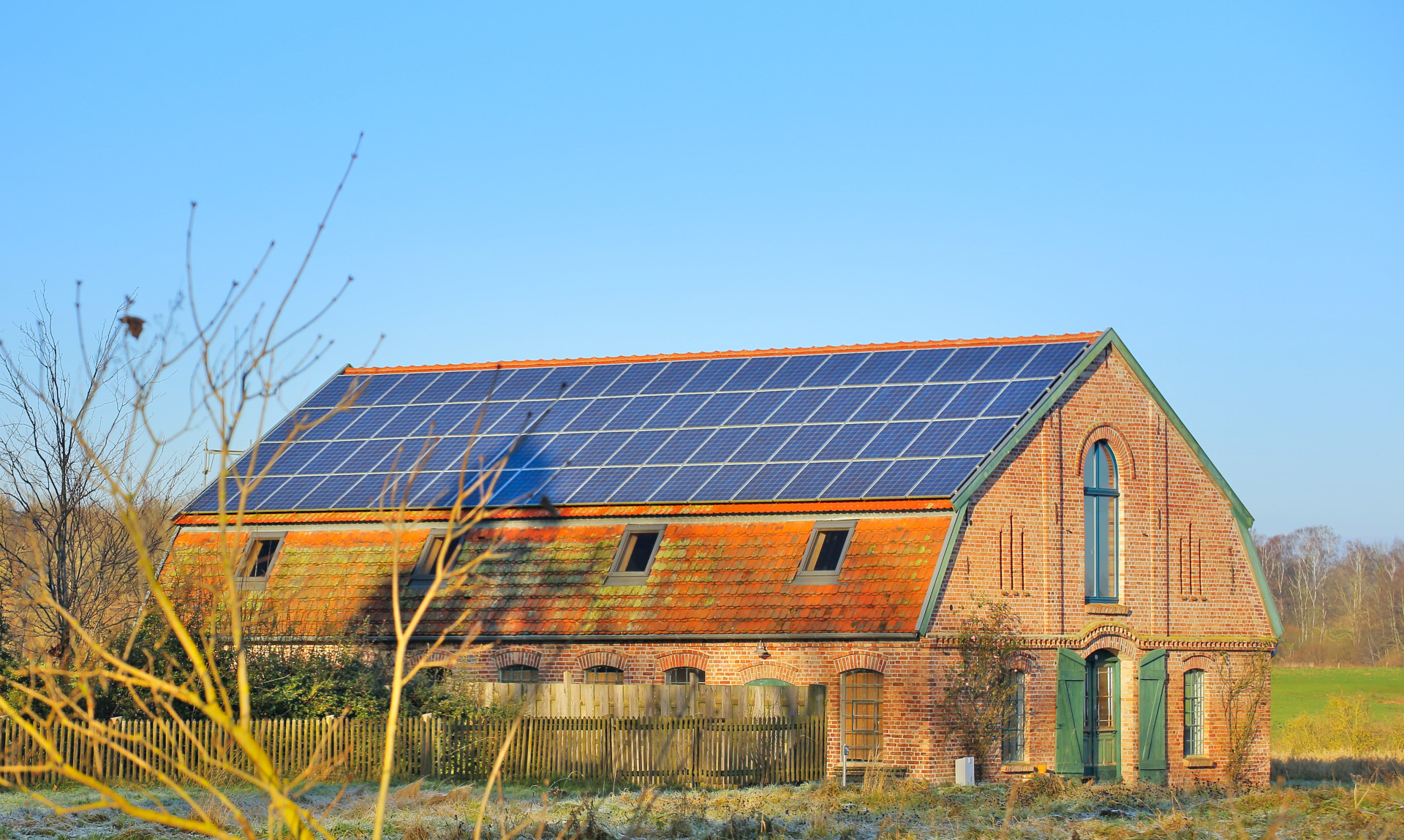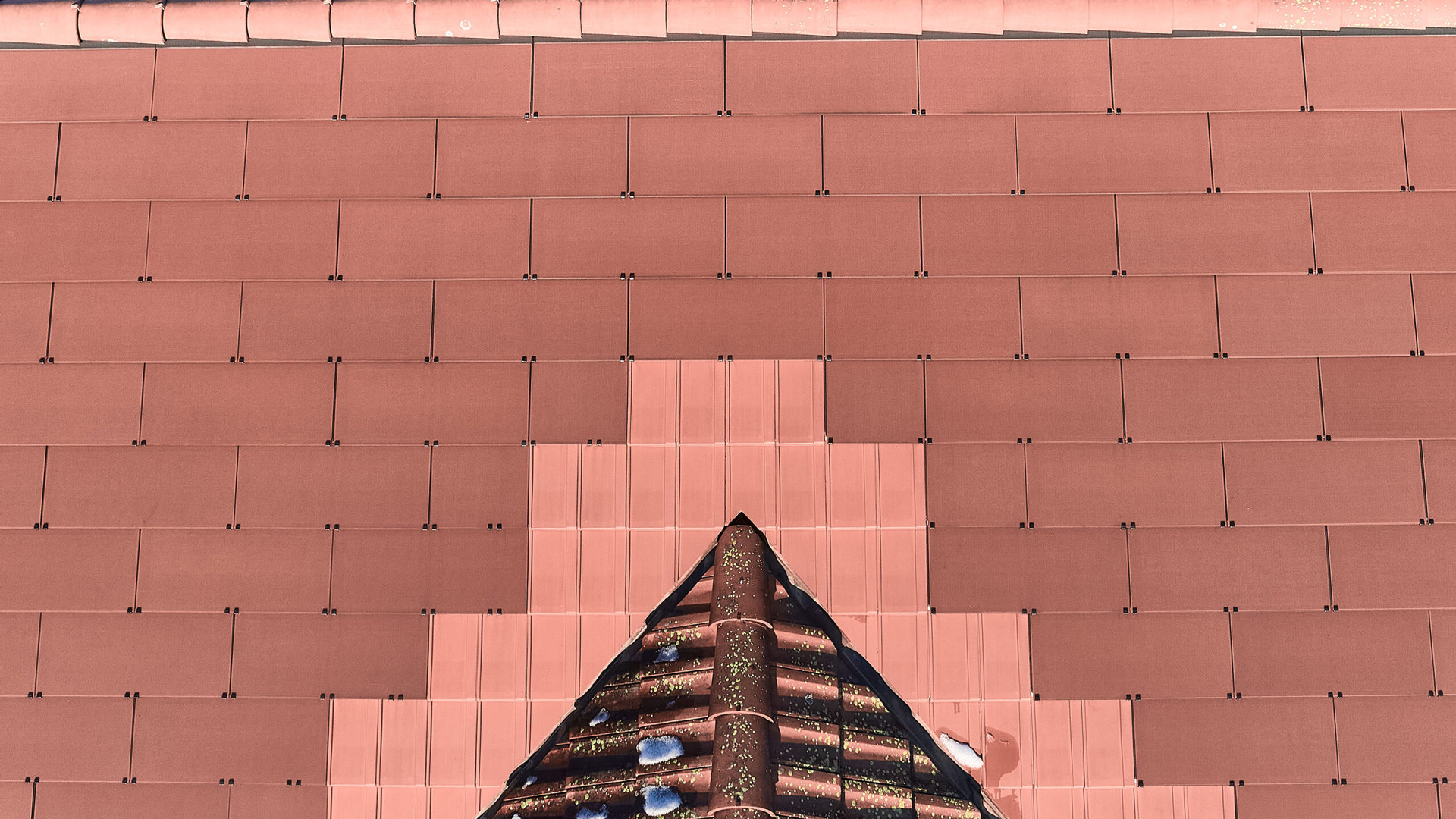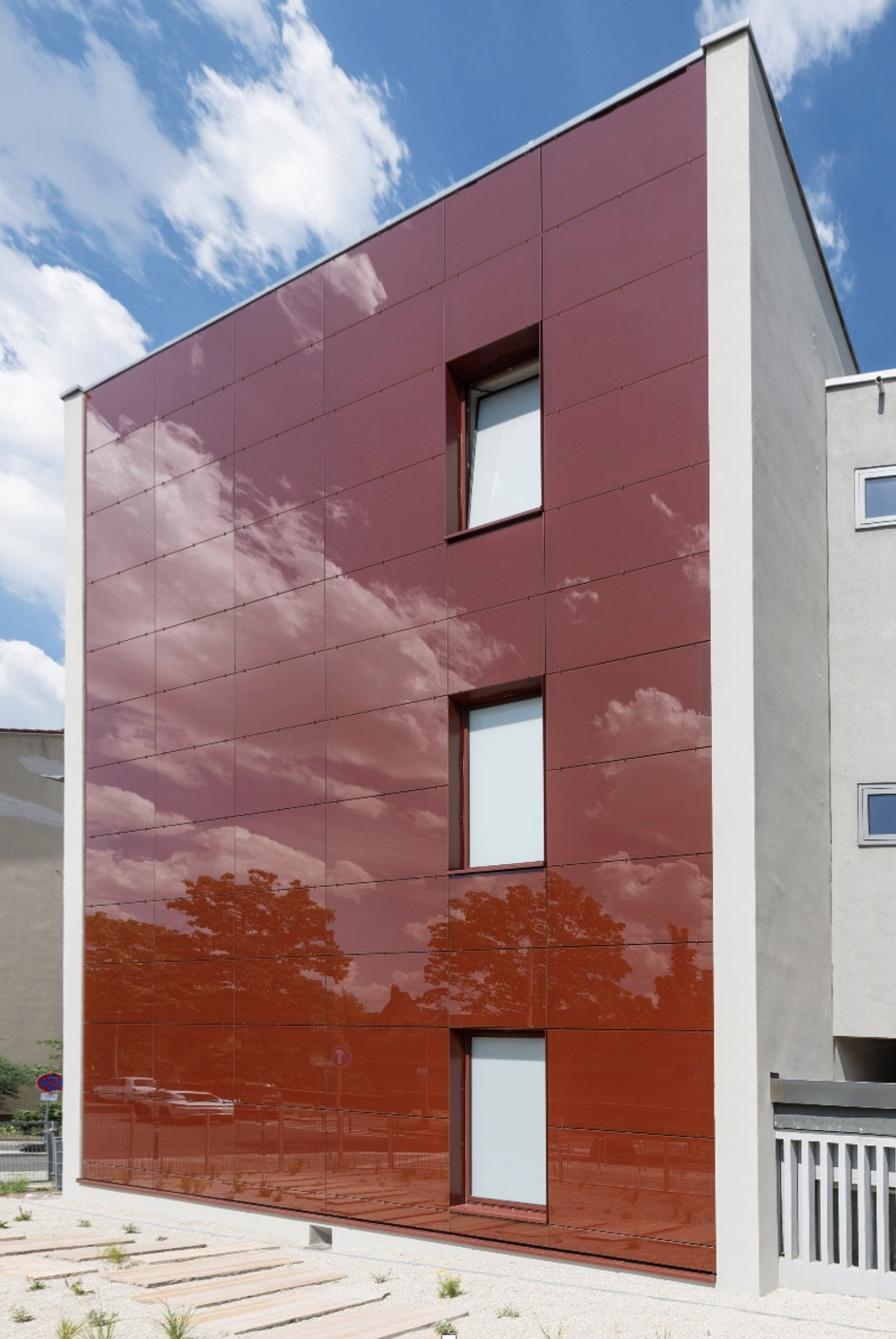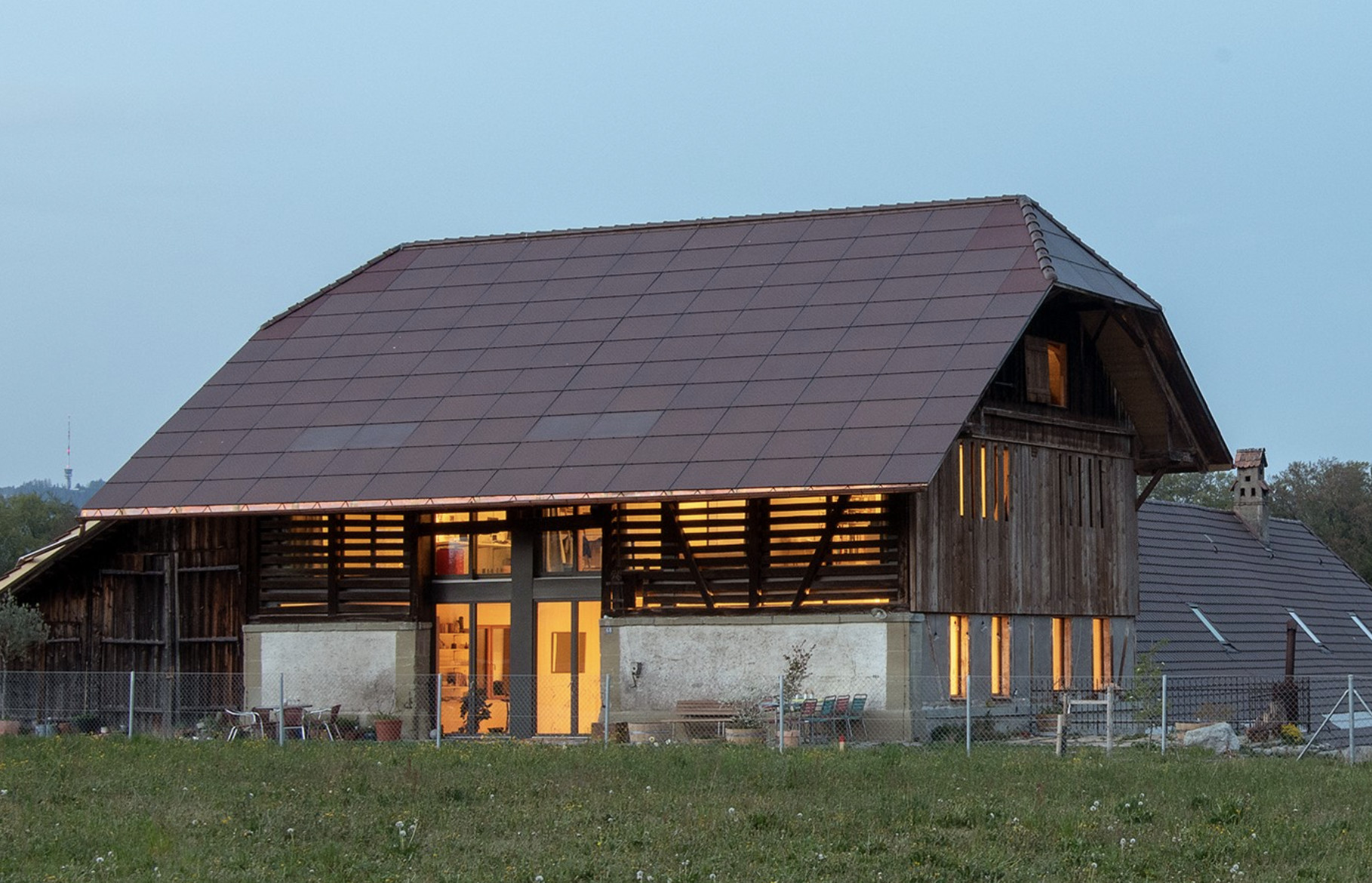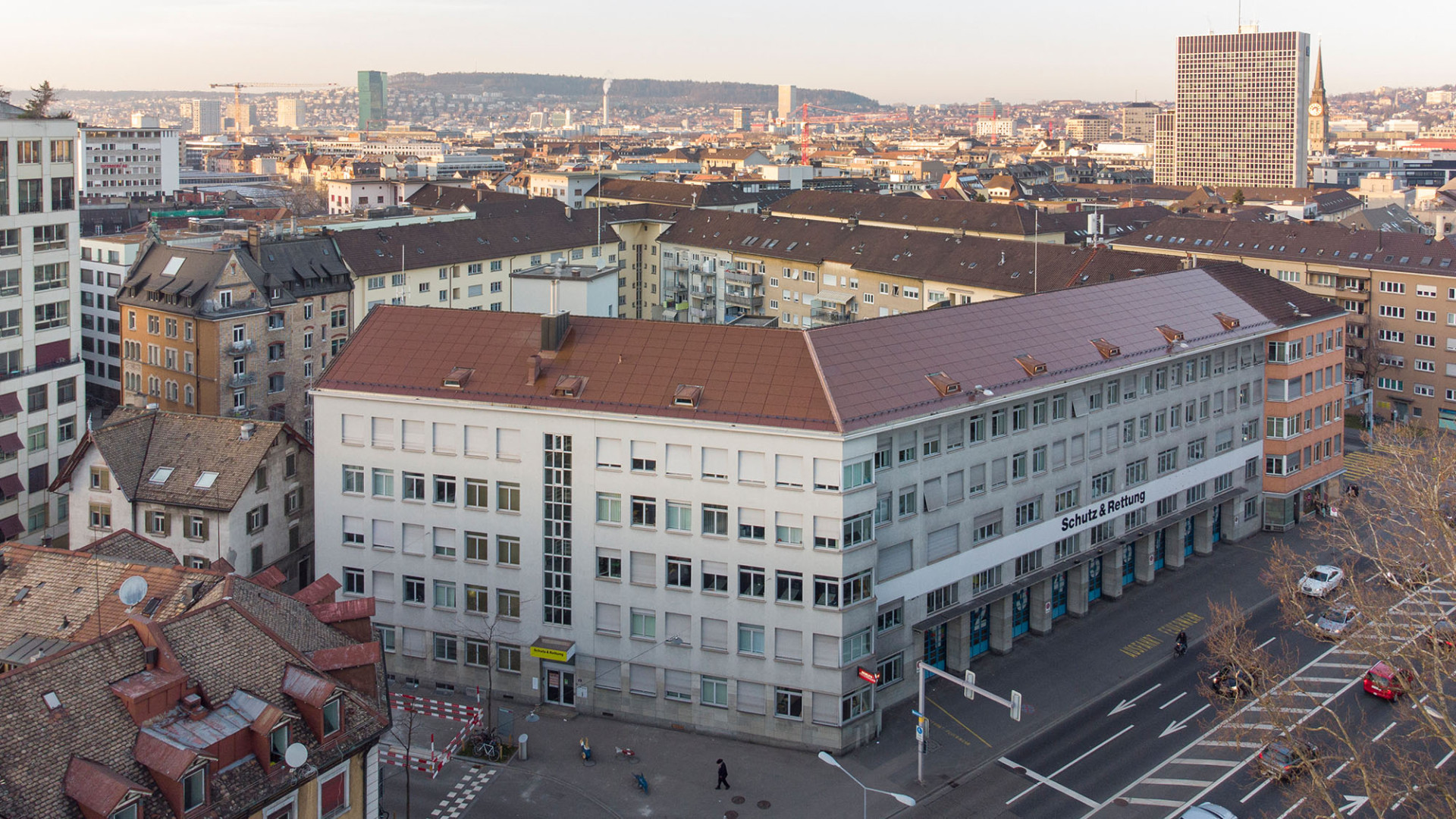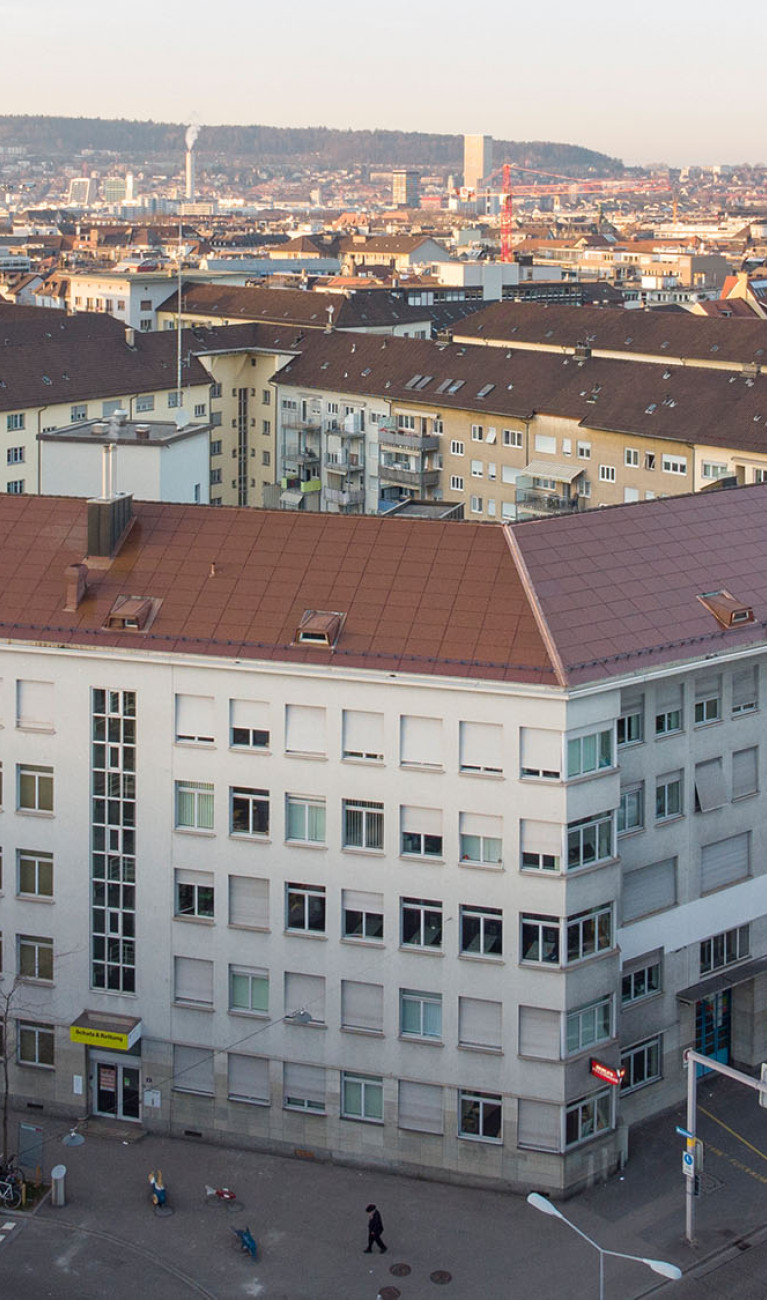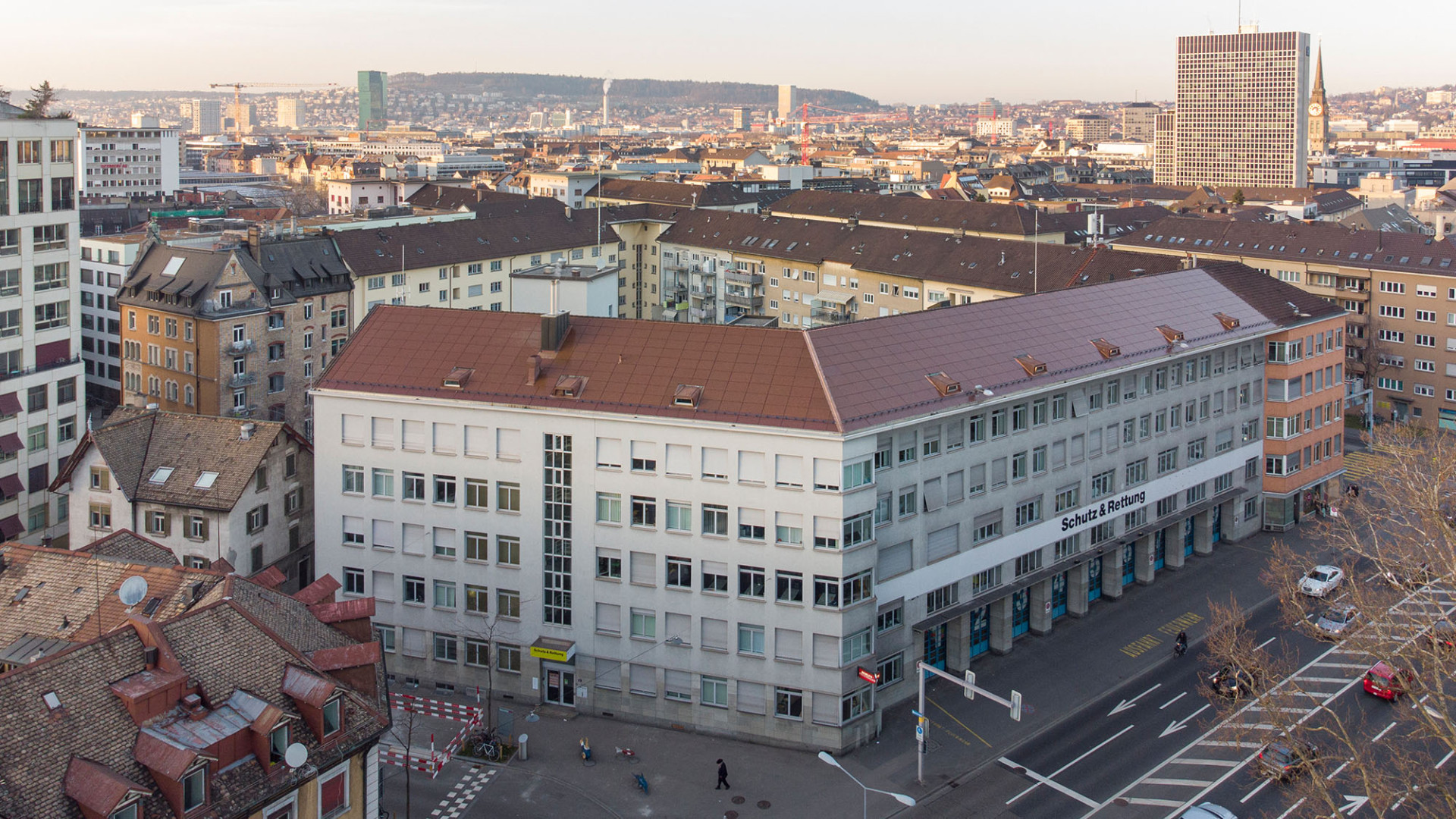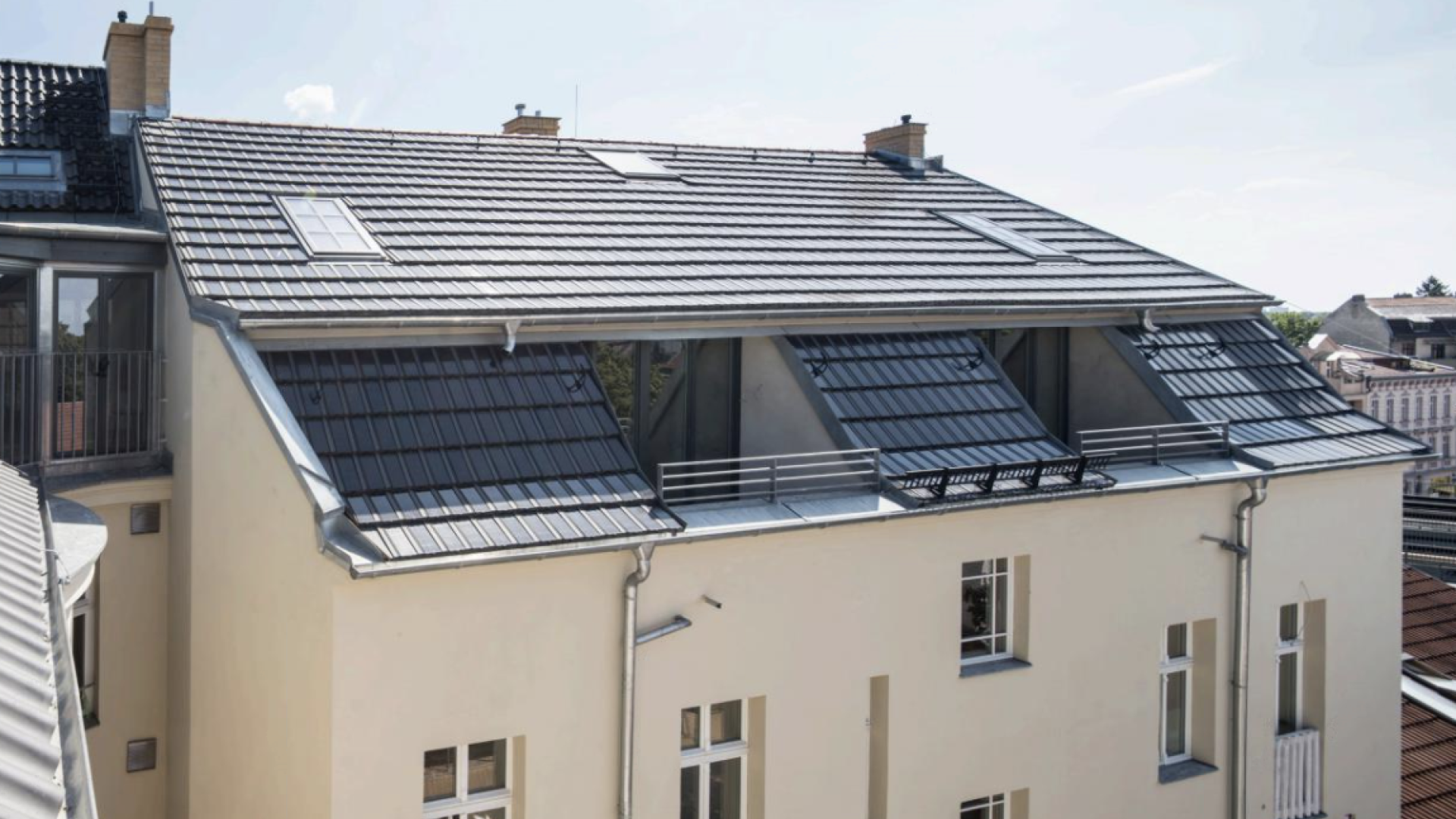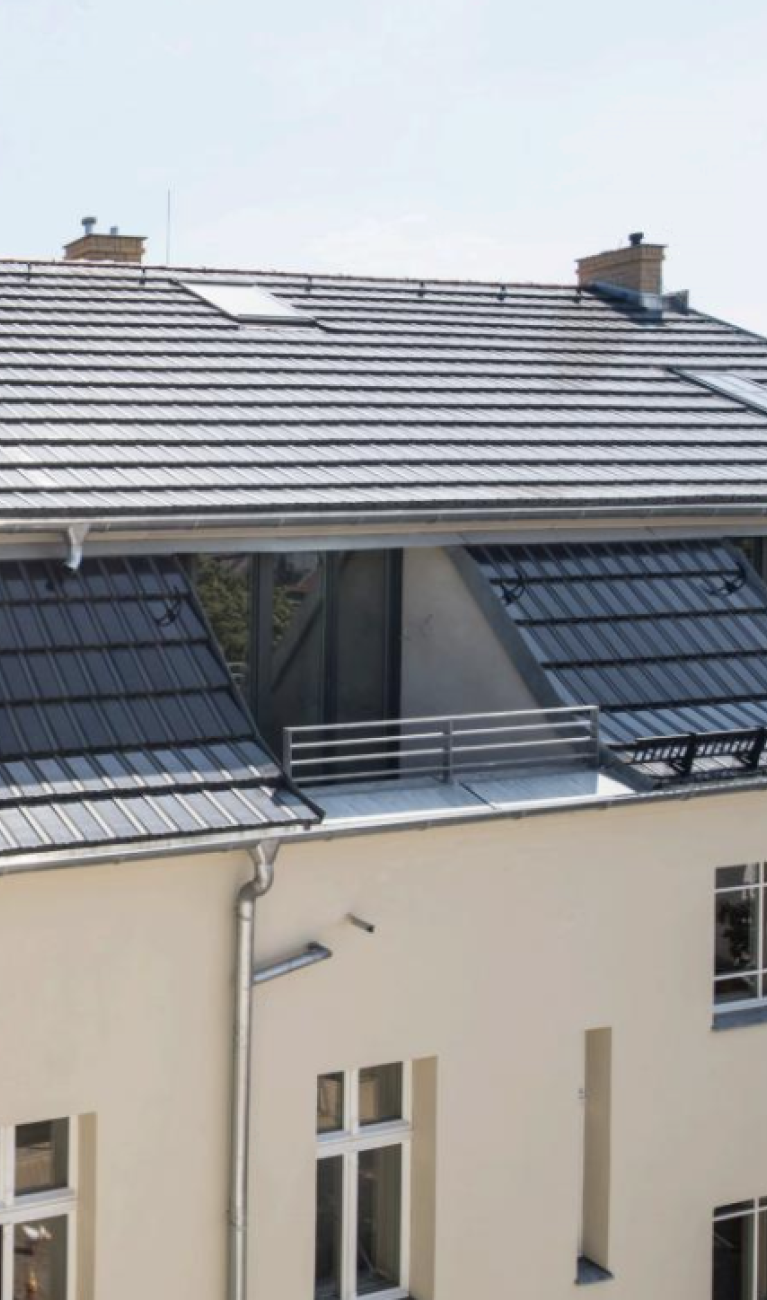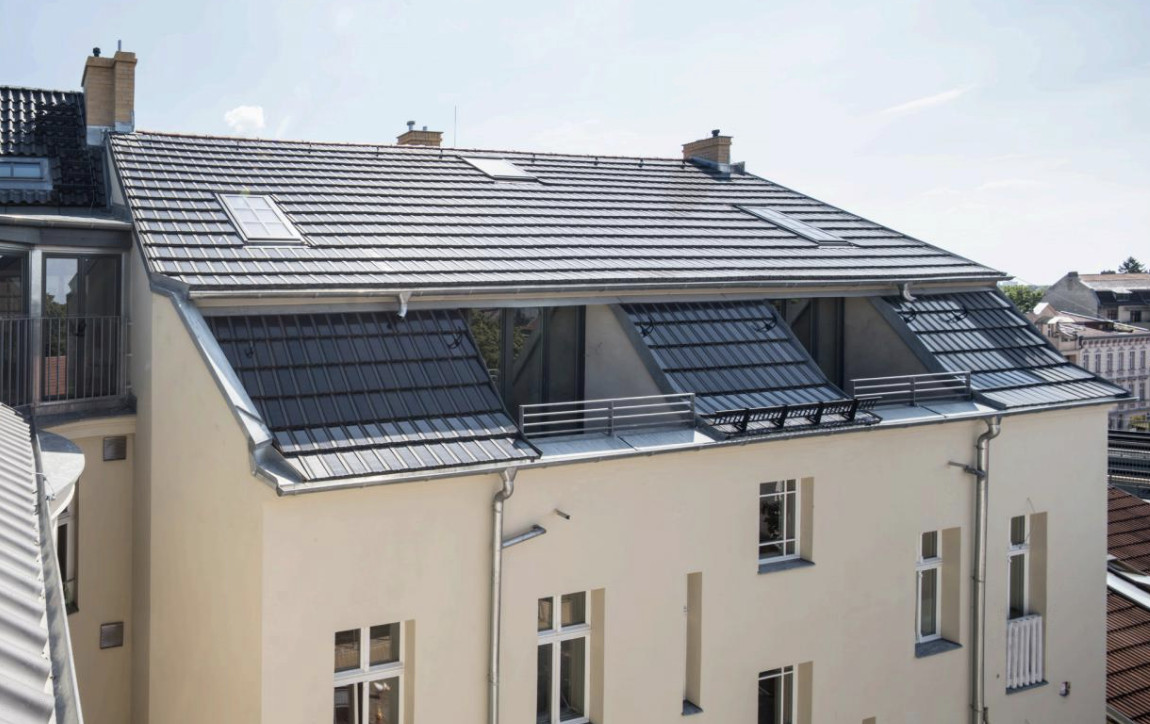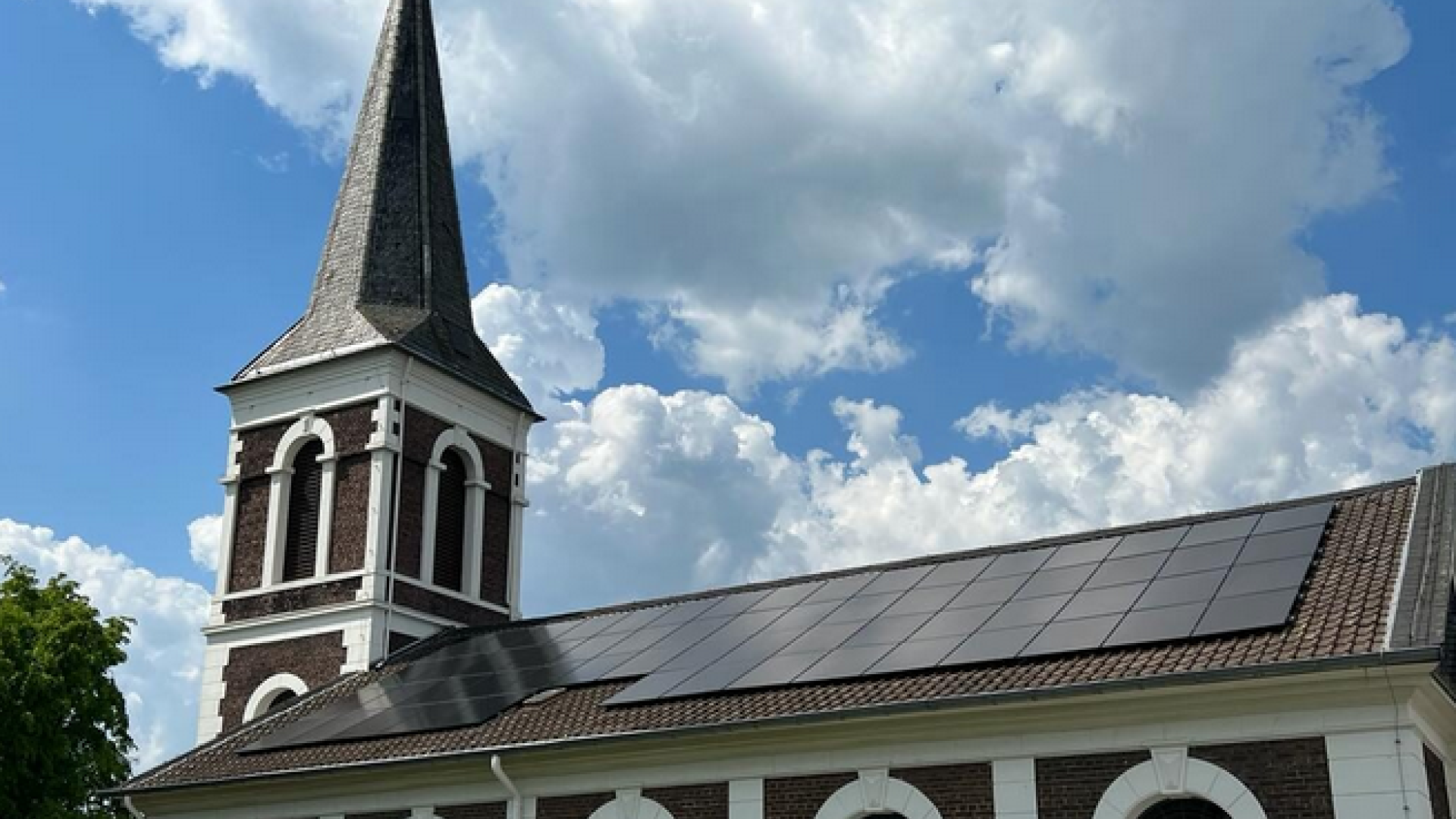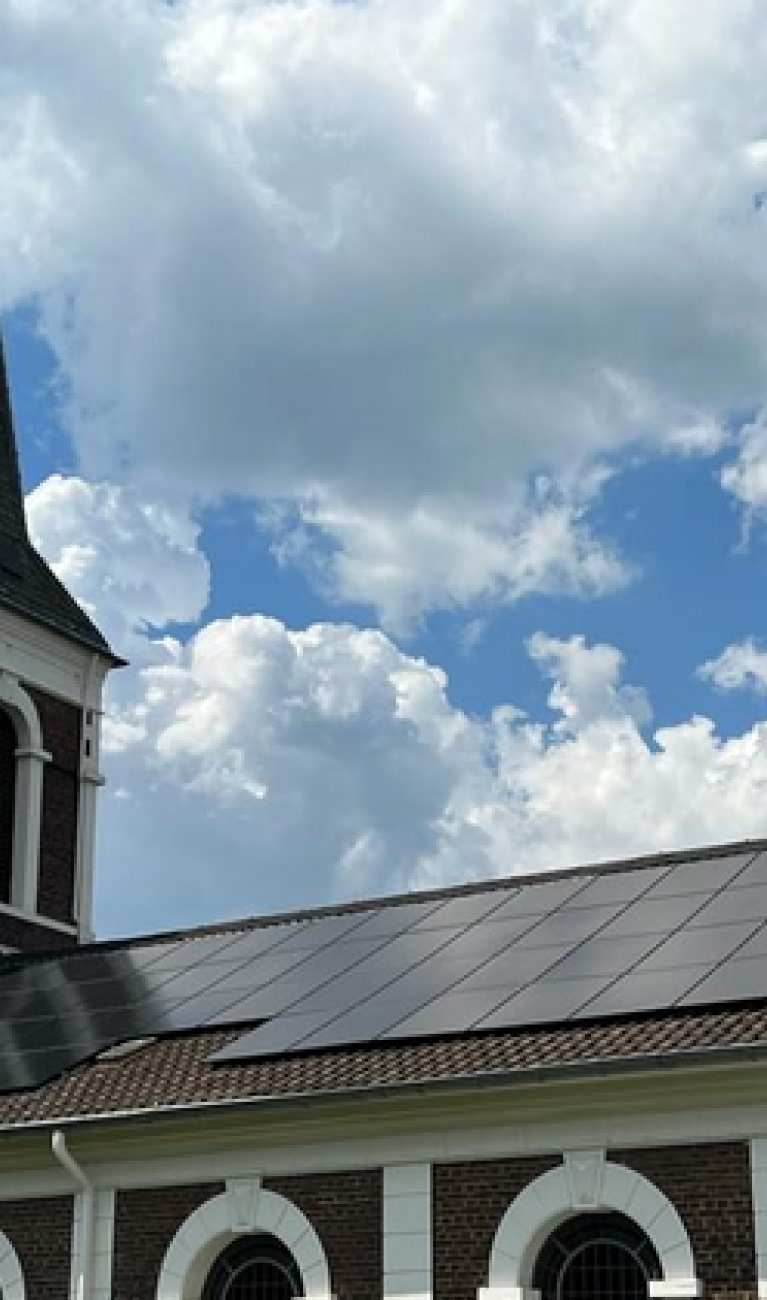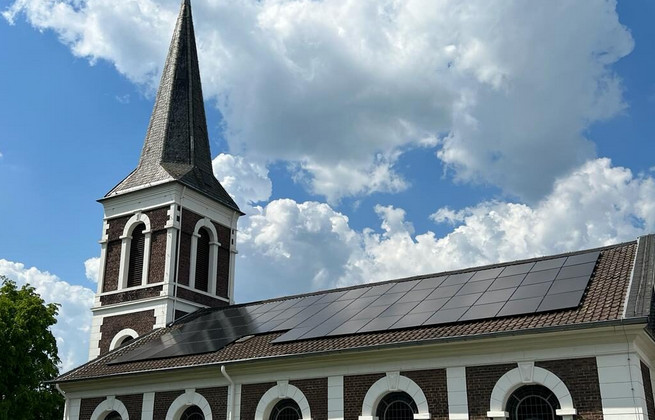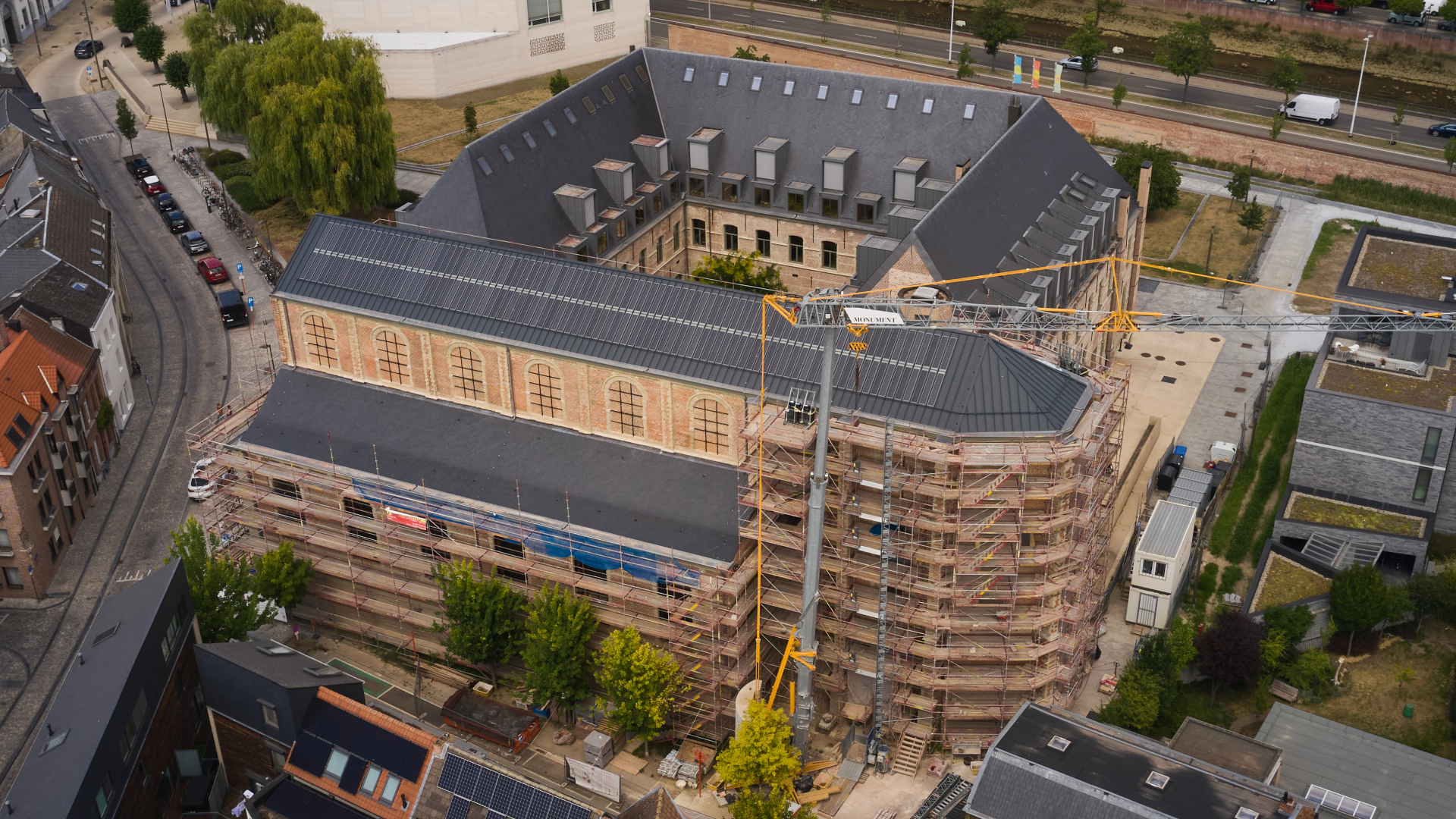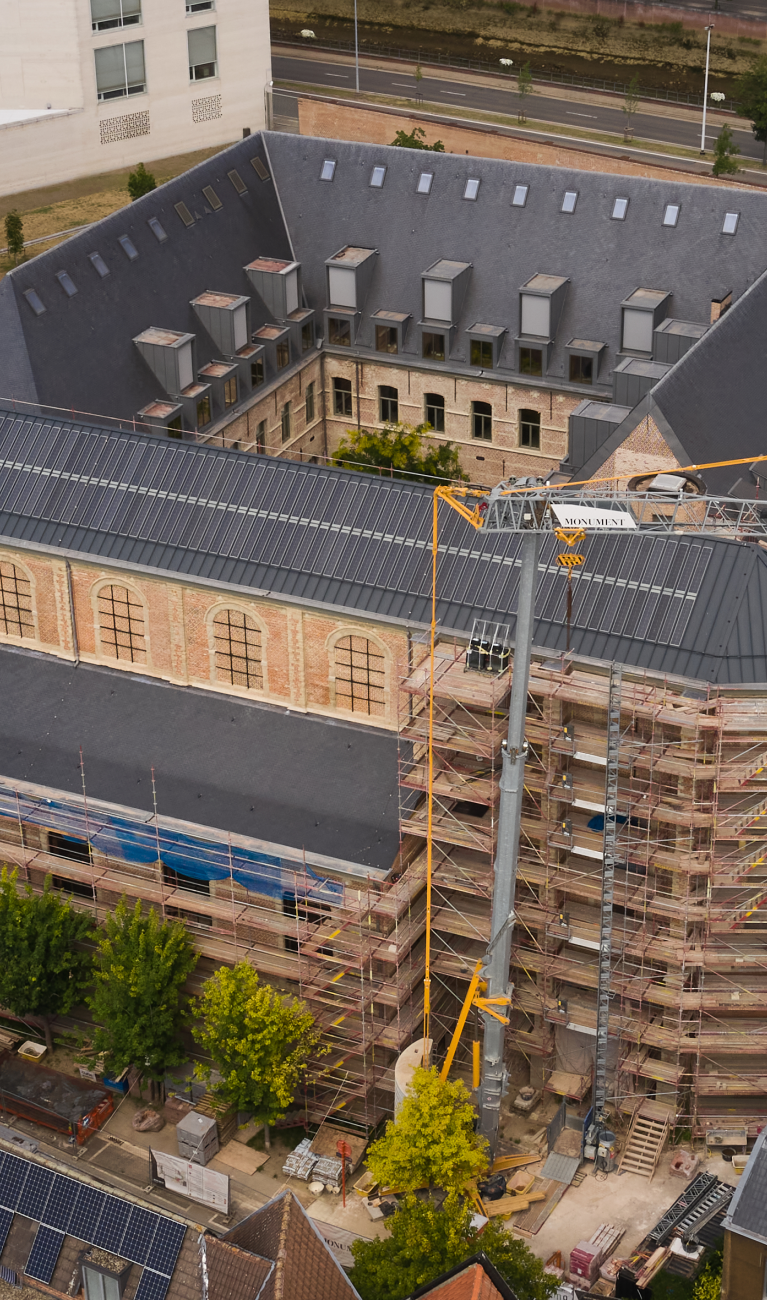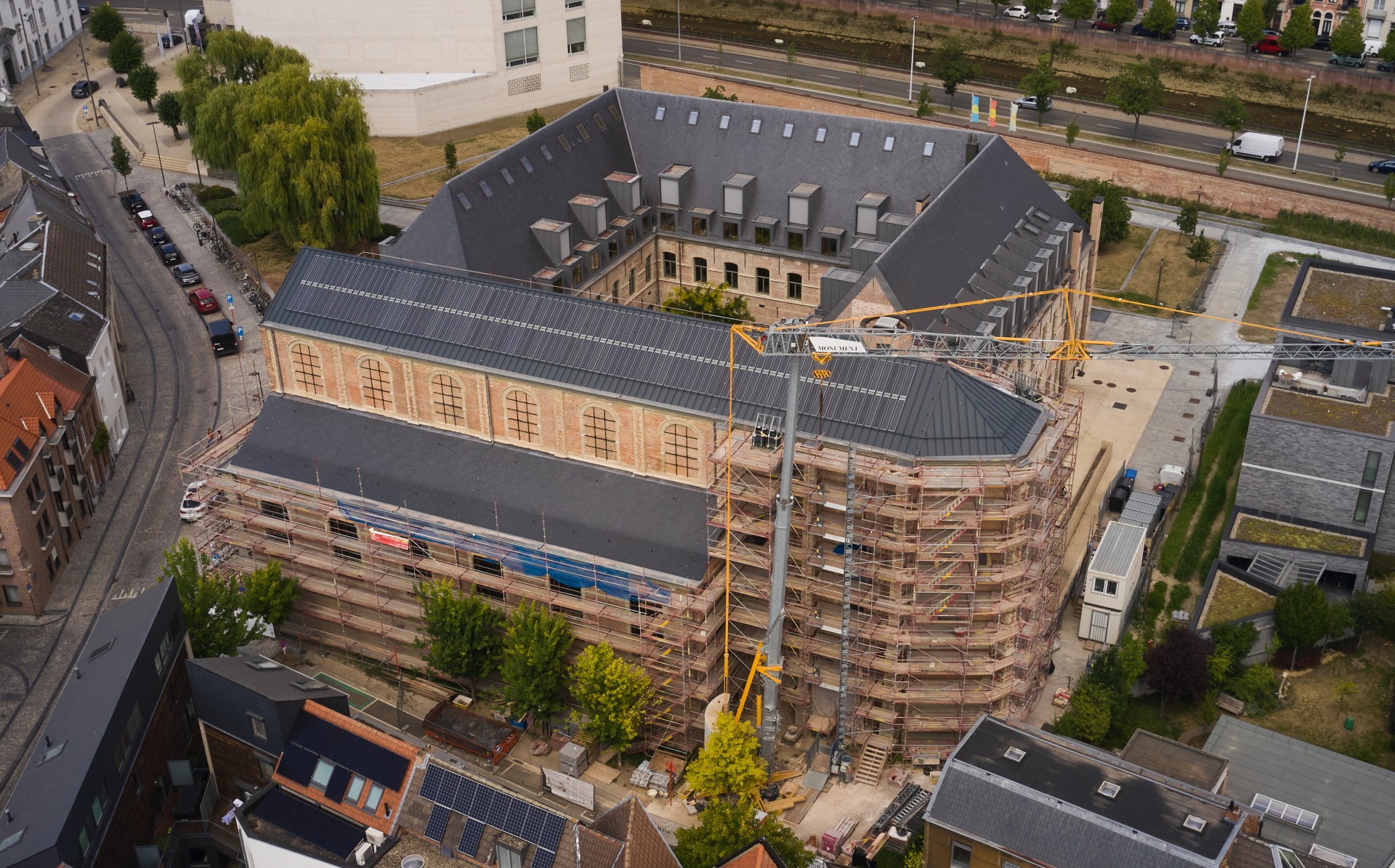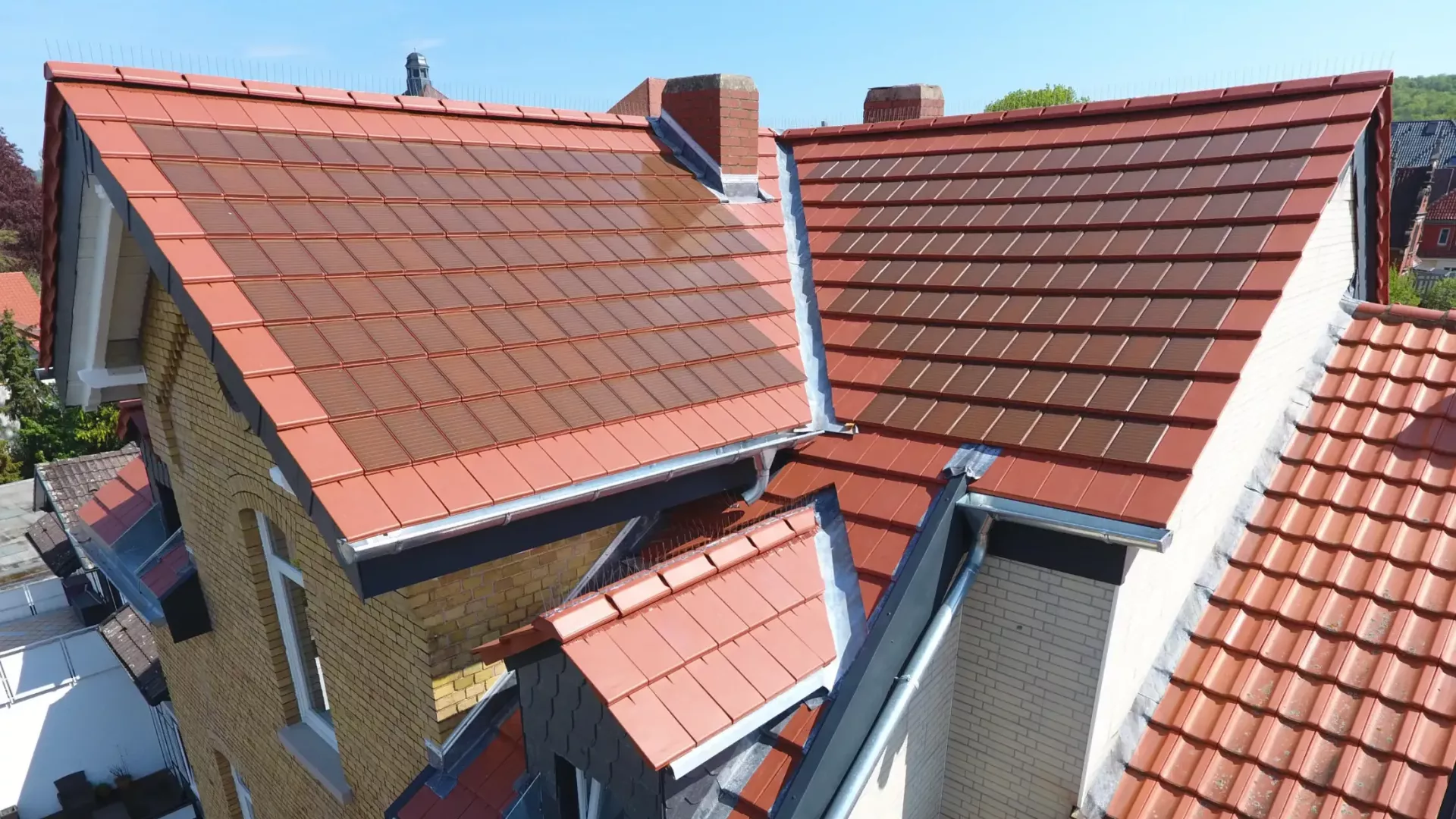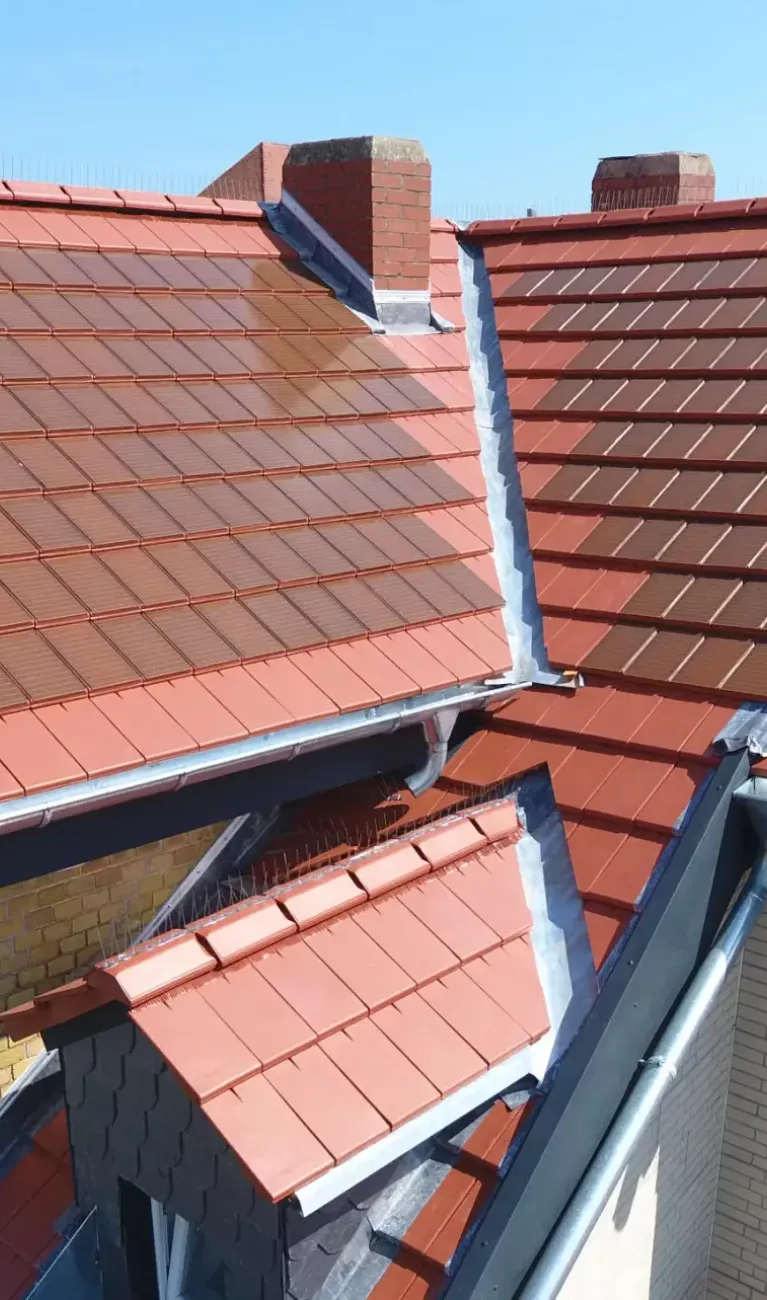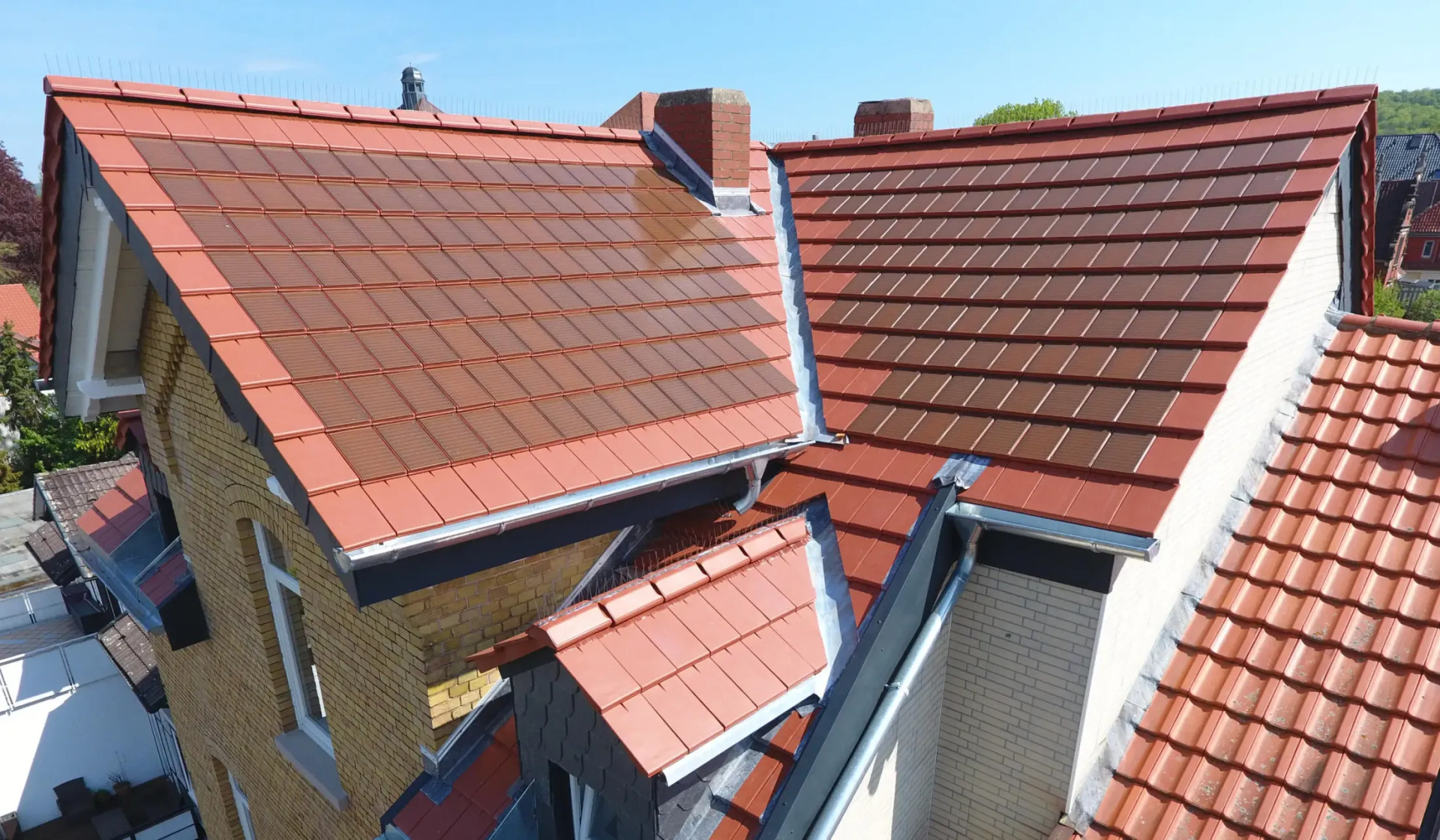Photovoltaics and listed buildings do not have to be mutually exclusive
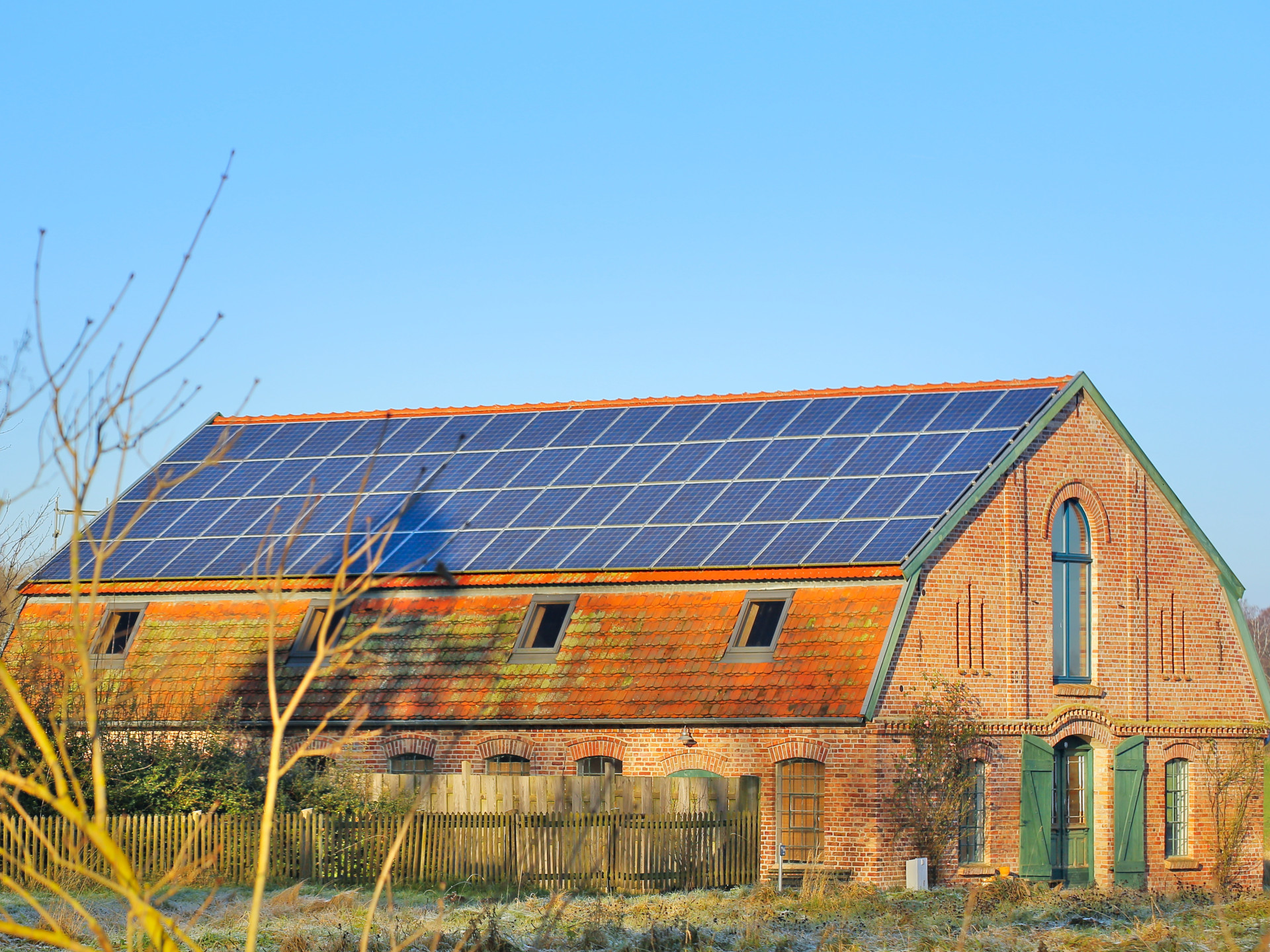
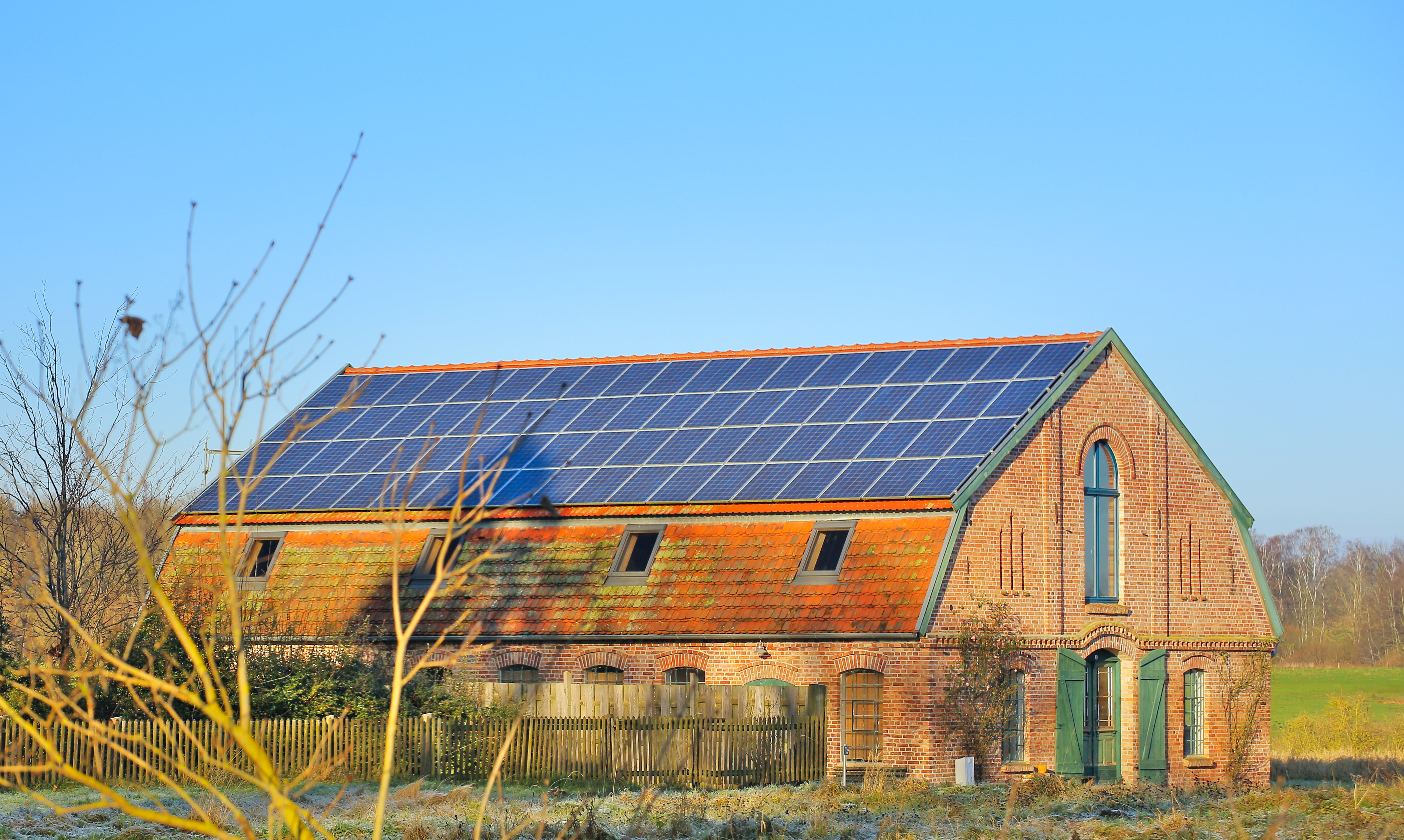
Installing photovoltaic systems on listed buildings helps fight climate change by generating energy sustainably and reducing CO2 emissions. In this interview, Niklas Albinius from the Consultancy Office for Building-Integrated Photovoltaics at Helmholtz-Zentrum Berlin tells us what does not have to be considered when installing them.


Mr. Albinius, how can photovoltaics be reconciled with listed buildings?
Preservationists have the important task of preserving historic buildings. That includes protecting them not only against deterioration and destruction but also against “aesthetic disfigurement” by photovoltaic systems. Yet the photovoltaic industry has made enormous progress in recent years and has developed special products that meet the specific architectural needs of listed buildings. People have therefore been working hard for some time on ways to combine the two elements harmoniously.
The share of listed buildings in Germany is relatively low. In 2021, it was between 8 and 10 percent. Is it possible at all for listed buildings to help with the energy transition?
Yes, because even a small contribution is still a contribution. Listed buildings can stand out as flagship projects and can serve to inspire other photovoltaic installations. But not every listed building is suitable. What matters is the part of the listed building stock that can be “invisibly” fitted with photovoltaic systems at the lowest possible cost while neither changing nor endangering the character of the buildings. This is an especially important aspect for preservationists. Preserving material characteristics is often their top priority. This means that the new materials used in a renovation need to resemble the old materials. Of course, this is usually impossible with photovoltaics, which is why listed buildings and photovoltaics are sometimes considered irreconcilable.
In my opinion, appearances are most important in this regard. If preserving material characteristics can be interpreted to mean that the new materials look the same and have the same function, in theory this could also be achieved with special photovoltaic modules. But this is still a matter of major controversy between the solar industry and individual preservationists.
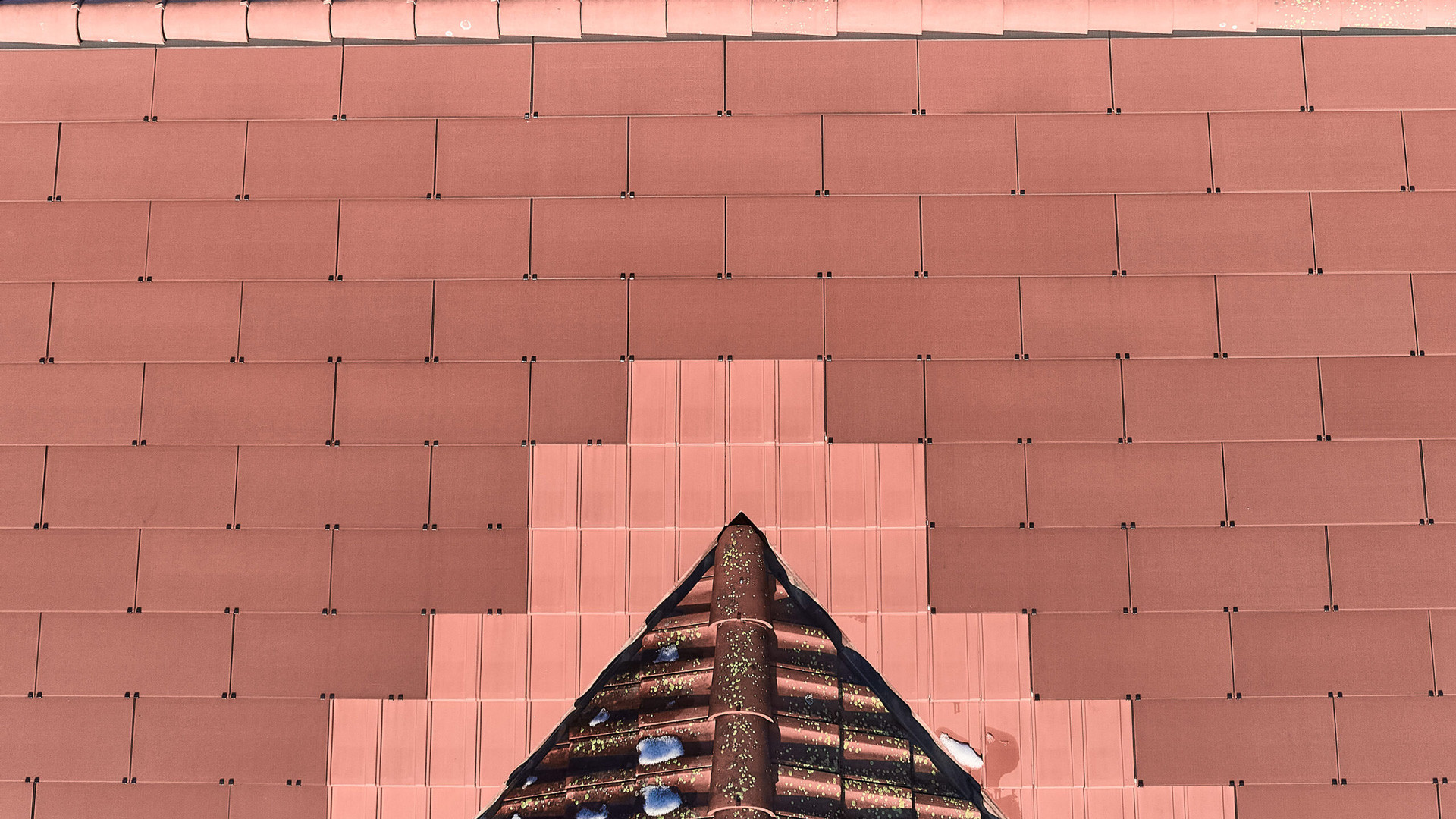
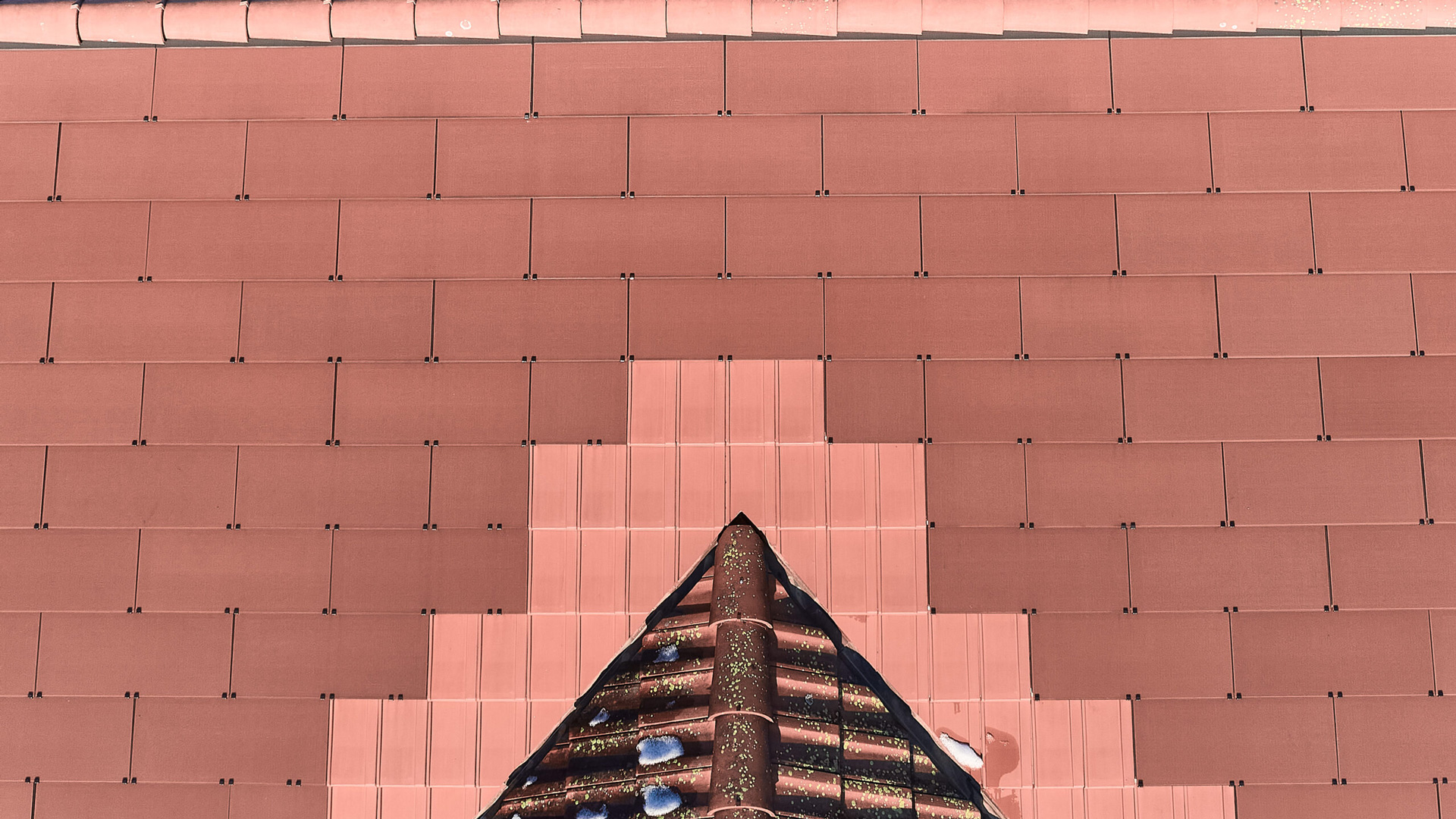
What might such an “invisible” solar installation look like?
We distinguish between two kinds of “invisibility.” The first kind involves installing the photovoltaic modules on parts of the roof that cannot be seen from the street or from neighboring buildings. On flat roofs, the solar panels can be installed parallel to the roof so that they practically disappear. On gable roofs, we usually have a direct line of sight only from a certain distance. Only in rare cases can facades be changed as they are easily visible and considered in preservationist circles to be the “face” of a building. Discussions about solar facades are only possible in exceptional cases where a facade has no relevance to a building’s listed status.
The second kind of “invisibility” involves modules that do not look like conventional solar modules. Instead, they are designed to resemble the original material as closely as possible in terms of shape, color and surface texture so that they can be integrated into the building. We call this building-integrated photovoltaics, or BIPV. For example, original roof tiles can be replaced by solar roof tiles that can also be installed in a direct line of sight since they are visually almost indistinguishable from conventional roof tiles.
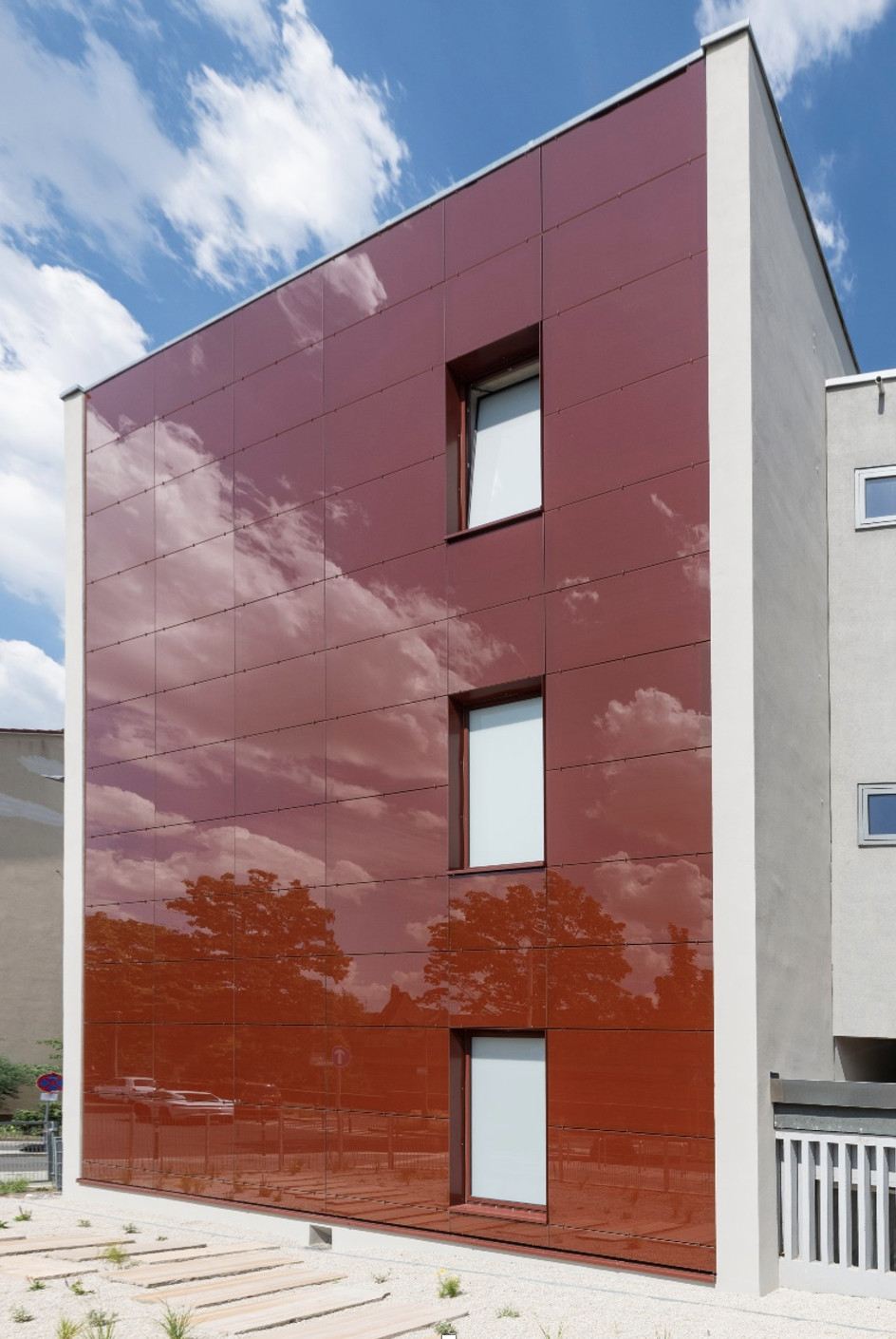

So how can we imagine these photovoltaic modules to be like?
Conventional solar modules have a tiled pattern where the black or dark blue cells contrast markedly with their white backsheet. Nowadays, manufacturers also use dark backsheets so that the cells stand out less and the tiled pattern nearly disappears. The electrical contacts on the cells, which are usually visible as silver lines, can also be given a dark color. And the aluminum frame can also be given a different color. The result is a module that is darker overall, with the individual cells virtually unrecognizable from a distance because of their uniform color.
But the greatest design potential lies in the glass surface of the modules. The glass can be colored, textured or printed. Various degrees of mattness are also possible. With these possibilities, the modules can imitate almost any material. There are still restrictions, though, because natural materials such as wood and stone are difficult to duplicate authentically with glass. But here, too, there are promising prototypes that bear a good resemblance to these materials.
Printing or putting films on modules limits their performance and impacts their efficiency. Homogeneous white modules have the highest performance losses, about 45 percent, while red solar roof tiles have losses in the range of 20 to 30 percent. Researchers are already working on ways to reduce these performance losses.
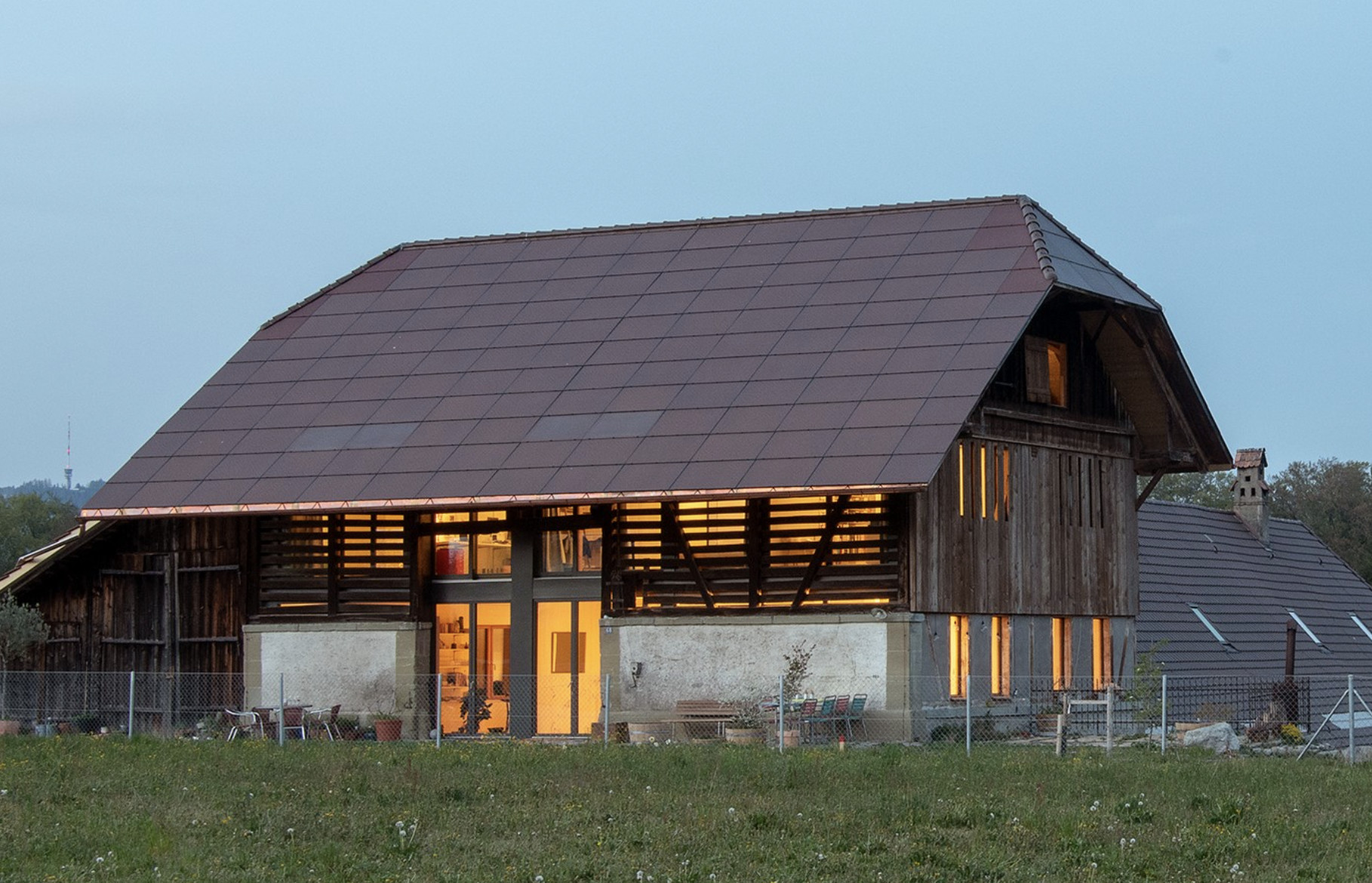
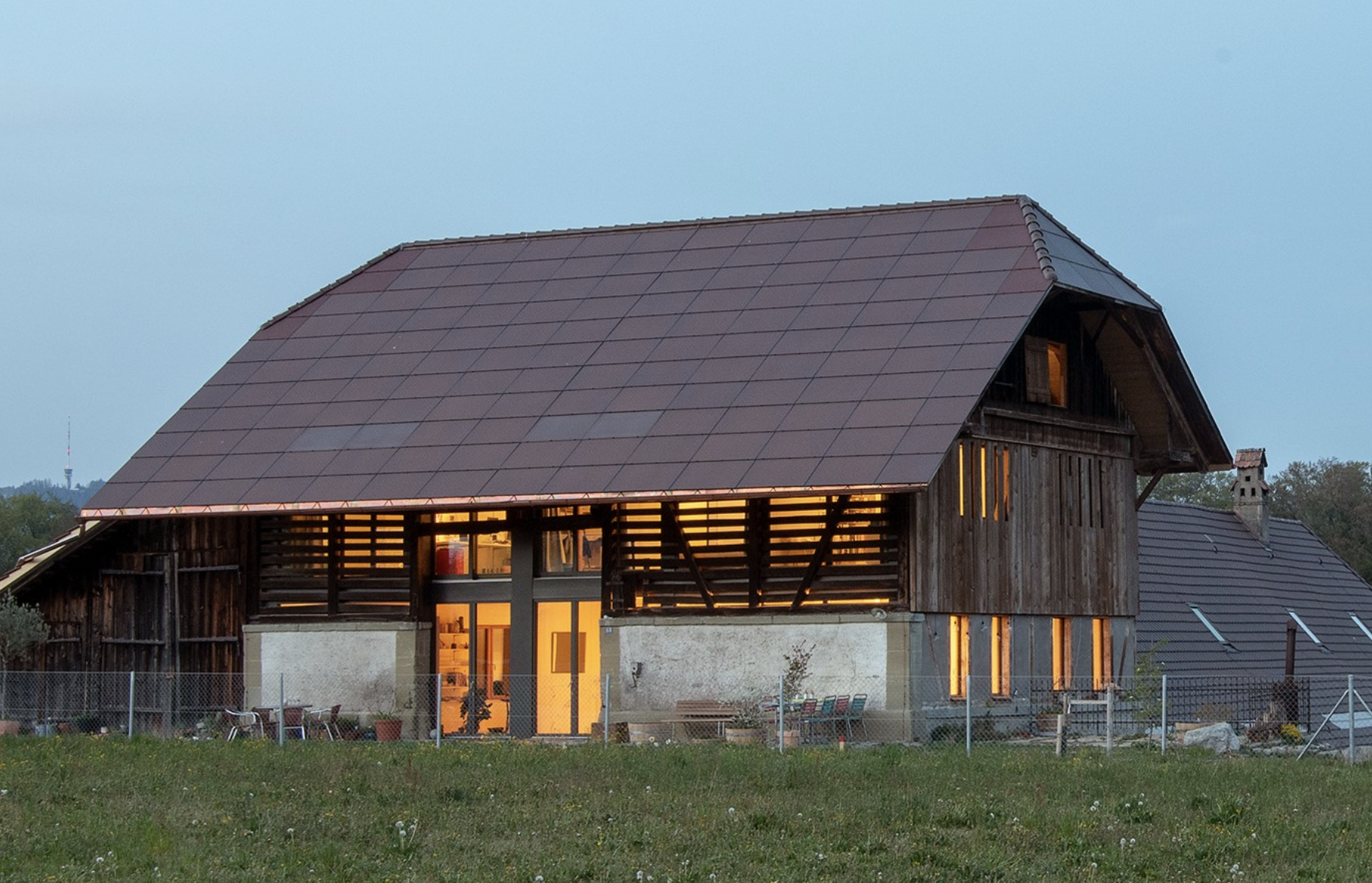
Are building-integrated solutions suitable for the building fabric of listed buildings at all?
In principle, the existing building fabric has little influence on the installation of building-integrated photovoltaic systems. As a rule, such systems are only installed in existing buildings during major renovations that are planned anyway. For example, if an old farmhouse needs to be structurally reinforced because of rotten roof beams, it would make sense as part of a comprehensive restoration in line with heritage requirements to perform the reinforcement so that a building-integrated photovoltaic system can also be installed. This way, the costs of the photovoltaic system can be minimized.
Building-integrated photovoltaic systems are always an expensive investment, but they also allow saving on conventional materials and on costs that would be incurred independently of the solar modules. For example, when I have a new roof made and want to use conventional photovoltaic modules, I have to pay for the new roof tiles anyway. I avoid these costs if I directly install an integrated photovoltaic system instead of the roof tiles and solar modules. The effect is even greater if no solar installation at all was planned initially. An integrated solar roof usually amortizes over a period of 20 years, but a conventional tiled roof never does.
In your opinion, what are the biggest challenges where photovoltaics and listed buildings come together?
Effective communication is essential for overcoming obstacles. The legal framework for renewable energy has already improved considerably. Berlin now has a solar energy mandate requiring new buildings and renovations to use 30 percent of the roof surface to generate solar power. At the national level, the German Renewable Energy Sources Act (EEG) has raised the status of renewable energy to that of paramount public interest, giving the implementation of photovoltaic systems priority over heritage preservation considerations.
However, the goal is to avoid conflicts between owners, architects and preservationists. The better everyone involved is informed about the technologies, regulations and possibilities, the fewer problems there will be in the future with building permits for photovoltaic systems on listed buildings.
Are there regions in Germany that are pioneers in equipping listed buildings with photovoltaics?
Things are still generally difficult in Germany. Good examples are best looked for abroad. For example, Switzerland is a leader in building-integrated photovoltaics. As a rule, in Germany it is individual municipalities that are actively working to combine heritage preservation and photovoltaics. In particular, those with a historic city center of listed buildings are often interested in finding forward-looking solutions. An example is Baden-Württemberg, where a solar energy mandate and guidelines for building-integrated photovoltaics were put in place at an early stage and many photovoltaic projects with building-integrated modules have been realized.
Can you name some examples of photovoltaics and listed buildings?
There is a roof renovation project in Zurich (Fig. 1 in picture gallery). The solar installation is nearly invisible because it is unrecognizable as such and blends into the cityscape perfectly thanks to its terracotta coloring. It has a smooth and homogeneous surface with no discontinuities. The solar installation is fully integrated and the modules are matt.
Another example is in the Babelsberg district of Potsdam in Germany (Fig. 2 in picture gallery). In this case, there is a solar installation on a roof that cannot be seen from outside. It is installed facing the courtyard and, here too, the solar tiles are more or less hidden because they are hardly recognizable as solar modules.
